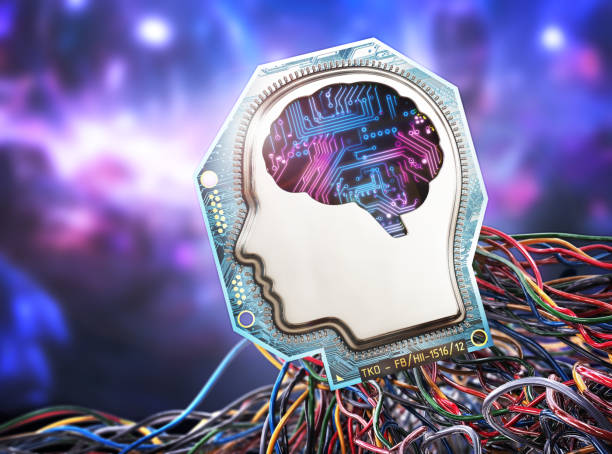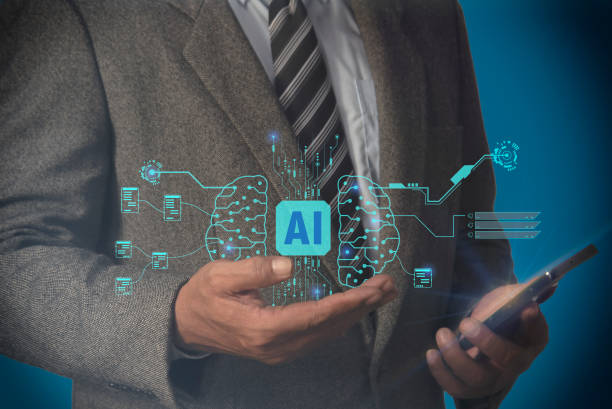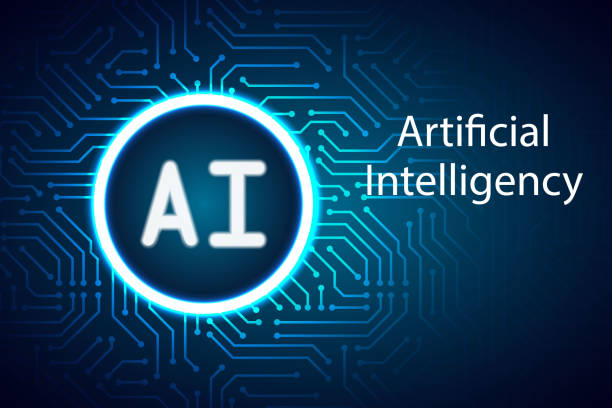What is an Artificial Intelligence Robot and How Does it Work?

#Artificial_Intelligence_Robot (AI Robot) is a combination of two important fields: #Artificial_Intelligence and #Robotics.
In short, an AI robot is a physical or virtual machine that, using artificial intelligence algorithms, has the ability to understand the environment, learn from experiences, make decisions, and perform complex tasks.
Artificial Intelligence allows the robot to perform its tasks without direct human intervention.
These robots can be used in various industries including manufacturing, healthcare, customer service, and even entertainment.
The function of an AI robot is based on an overall cycle.
First, the robot collects information through its sensors (such as cameras, microphones, touch sensors).
Then, this information is processed by artificial intelligence algorithms.
Algorithms can include neural networks, machine learning, and natural language processing.
After processing, the robot makes decisions based on the information obtained and the planned goals.
Finally, the robot takes action using its actuators (such as motors, arms, displays).
This cycle is repeated continuously, and the robot gradually learns from its experiences and improves its performance.
In fact, an AI robot tries to act like human intelligence.
The main difference between ordinary robots and AI robots is that ordinary robots can only perform programmed tasks repetitively, while AI robots are capable of performing new and unexpected tasks.
For example, an AI robot can move in an unknown environment, identify obstacles, and adjust its path based on them.
These capabilities make the AI robot a powerful tool for solving complex problems.
Do you have an online store, but your sales are not as expected? Rasaweb solves your problem forever with professional online store designs!
✅ Significant increase in conversion rate and sales
✅ Unparalleled user experience for your customers
⚡ Click to get free consultation with Rasaweb!
Types of AI Robots and Their Applications
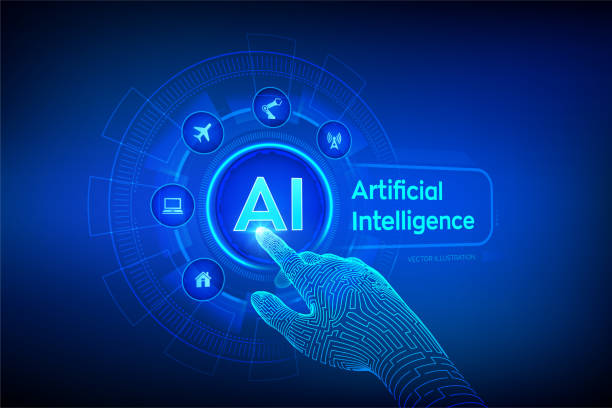
AI robots are designed and built in various types, each with its own specific applications.
One of the common classifications is based on the type of task the robot performs.
For example, industrial robots are used to automate production lines, medical robots are used to assist in surgery and patient care, and service robots are used to provide services to customers.
Industrial robots often have powerful and precise arms that can perform repetitive and heavy tasks with high accuracy.
Another classification is based on the type of artificial intelligence used in the robot.
Some robots use deep neural networks for pattern recognition and prediction, while others use reinforcement learning algorithms to learn through trial and error.
AI robots using neural networks can recognize images, process sound, and understand natural language.
These capabilities make them suitable for applications such as face recognition, voice recognition, and language translation.
The applications of AI robots are very broad and diverse.
In industry, these robots can automate production lines, increase product quality, and reduce costs.
In healthcare, AI robots can assist surgeons in performing complex operations, care for patients, and discover new drugs.
In customer service, chatbots can answer customer questions and solve their problems.
Finally, AI robots can even be used in fields such as education, agriculture, and space exploration.
Challenges and Limitations of AI Robots

Despite the remarkable advances in the field of AI robots, there are still significant challenges and limitations that need to be overcome.
One of the most important challenges is the high cost of developing and deploying these robots.
Designing and building an AI robot requires a great deal of expertise and resources, which makes their use impossible for many organizations and individuals.
Another challenge is the complexity of artificial intelligence algorithms.
Understanding and implementing these algorithms requires specialized knowledge and advanced programming skills.
In addition, training AI robots requires a lot of data, which can be time-consuming and costly to collect and prepare.
Artificial intelligence algorithms may also face problems such as bias and discrimination, which can lead to incorrect and unfair decision-making.
Technical limitations are also among the obstacles facing AI robots.
Robots still have difficulty understanding and interacting with the real world.
They may make mistakes in recognizing complex patterns and predicting unexpected events.
In addition, AI robots still lack creativity, empathy, and moral judgment, which makes them unsuitable for some applications.
For example, an AI robot may not be able to understand an emotional situation and provide an appropriate response.
| Challenge | Description |
|---|---|
| High Cost | Developing and deploying AI robots requires a great deal of expertise and resources. |
| Algorithm Complexity | Understanding and implementing artificial intelligence algorithms requires specialized knowledge. |
| Technical Limitations | Robots still have difficulty understanding and interacting with the real world. |
The Future of AI Robots and Their Impact on Our Lives

The future of AI robots is very bright and promising.
With the increasing advances in the field of artificial intelligence and robotics, it is expected that these robots will play a much more important role in our lives in the future.
They can help us with everyday tasks, increase productivity, and improve the quality of life.
One of the areas where AI robots will play an important role in the future is automation.
Robots can perform repetitive and dangerous tasks, which allows humans to focus on more creative and strategic tasks.
Automation can also lead to increased productivity and reduced costs.
Another area is healthcare.
AI robots can assist doctors in diagnosing diseases, performing surgeries, and caring for patients.
They can also help the elderly and disabled with their daily tasks.
This can lead to improved health and well-being of individuals.
However, it should be noted that the development and use of AI robots requires attention to ethical and social issues.
It must be ensured that these robots are used responsibly and fairly and do not violate the rights and privacy of individuals.
Also, attention should be paid to the impact of automation on employment and solutions should be provided to reduce its negative effects.
Are you dissatisfied with the low conversion rate of visitors to customers on your online store?
Solve this problem forever with professional online store design by Rasaweb!
✅ Increase the conversion rate of visitors to customers
✅ Create a great user experience and build customer trust
⚡ Get free consultation
Ethical Considerations in the Design and Use of AI Robots

As AI robots increasingly penetrate our lives, ethical considerations surrounding their design and use become particularly important.
One of the most important issues is accountability.
If an AI robot makes a mistake or causes damage, who will be responsible? Should the robot’s maker, the robot’s user, or the robot itself be held responsible? These questions do not yet have definitive answers and require further discussion and review.
Another issue is privacy.
AI robots often collect a lot of information about their users, including personal information, behavioral patterns, and even medical information.
How can this information be protected and prevented from being misused? Regulations and laws must be put in place to regulate the collection, use, and sharing of information by AI robots.
The third issue is bias and discrimination.
Artificial intelligence algorithms may reproduce biases and discriminations present in society based on their training data.
This can lead to unfair and discriminatory decision-making by AI robots.
To prevent this problem, training data should be carefully reviewed, and algorithms that are free from bias should be used.
Ethical considerations of AI should be considered in all stages of design and development of AI robots.
How to Build an AI Robot?
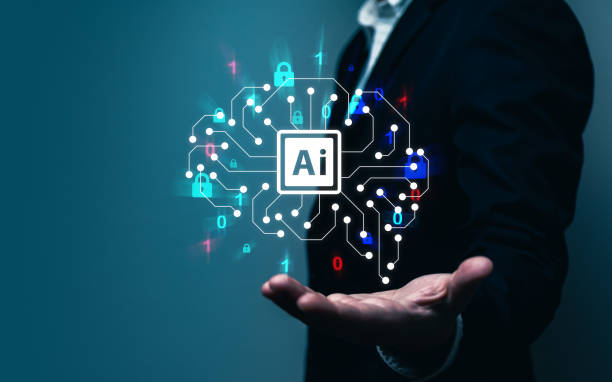
Building an AI robot is a challenging but very exciting project.
To get started, you need a basic knowledge in the fields of #programming, #robotics, and #artificial_intelligence.
Also, you should be familiar with the tools and technologies needed to build a robot.
The first step is to choose a suitable hardware platform.
You can use ready-made platforms such as Arduino or Raspberry Pi, or design and build your own custom robot.
The hardware platform must have sensors, actuators, and a processor that can run artificial intelligence algorithms.
The next step is to choose a suitable programming language.
Python is one of the most popular programming languages for artificial intelligence because it has powerful libraries such as TensorFlow and PyTorch that are used to develop machine learning models.
Python also has a large community of developers who can help you solve problems.
Then, you need to implement the artificial intelligence algorithms needed for your robot.
These algorithms can include neural networks, reinforcement learning, and natural language processing.
You can use ready-made artificial intelligence libraries, or design and implement your own algorithms from scratch.
Finally, you need to train your robot.
For this, you need a lot of data that you can collect from various sources.
After training, you should test your robot and improve its performance.
Building an AI robot requires patience and perseverance, but the end result will be very rewarding.
Tools and Technologies Needed to Develop AI Robots
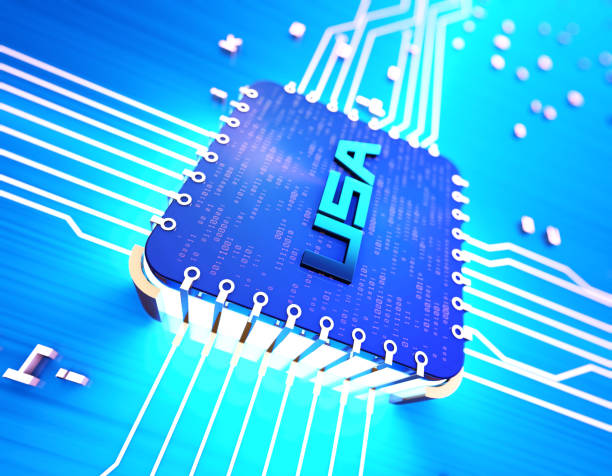
Developing AI robots requires the use of various tools and technologies.
In the hardware section, you need sensors, actuators, processors, and a power source.
Sensors are used to collect information from the environment, actuators are used to perform physical operations, processors are used to run artificial intelligence algorithms, and the power source is used to supply the robot with the energy it needs.
In the software section, you need a programming language, an integrated development environment (IDE), and artificial intelligence libraries.
Python is one of the most popular programming languages for artificial intelligence because it has powerful libraries such as TensorFlow and PyTorch.
IDE is a software that helps you write, debug, and run your code.
In addition, you need tools for collecting, processing, and analyzing data.
Data is used to train the AI robot, so the quality and quantity of data is very important.
You can use tools like Apache Spark and Hadoop to process big data.
You also need tools for simulating and testing the robot.
Simulation helps you test the robot’s performance and identify problems before building the physical robot.
You can use tools like Gazebo and V-REP to simulate robots.
| Tool/Technology | Description |
|---|---|
| Sensors | Collect information from the environment |
| Actuators | Perform physical operations |
| Processors | Run artificial intelligence algorithms |
| Python | Popular programming language for artificial intelligence |
| TensorFlow/PyTorch | Powerful artificial intelligence libraries |
Finally, to develop an AI robot, you need a team of experts including robotics engineers, data scientists, programmers, and artificial intelligence specialists.
Collaboration and coordination between team members is essential for project success.
Machine Learning and Its Role in AI Robots

Machine learning is one of the most important sub-branches of artificial intelligence that plays a vital role in the development of AI robots.
Machine learning allows robots to learn from data and improve their performance without explicit programming.
In other words, robots can identify patterns and relationships by analyzing data and use this knowledge to make better decisions.
There are different types of machine learning algorithms, each suitable for specific applications.
Supervised learning is one of the most common types of machine learning in which the robot is trained using labeled data.
For example, a robot can learn to recognize different objects using labeled images.
Unsupervised learning is used in cases where labeled data is not available.
In this case, the robot must automatically extract patterns and structures from the data.
Reinforcement learning is a machine learning method in which the robot learns how to make the best decisions by interacting with the environment.
The robot learns which actions lead to rewards and which actions lead to penalties by performing various actions and receiving rewards or penalties.
This method is very suitable for training robots in complex and dynamic environments.
Machine learning allows AI robots to continuously learn from their experiences and improve their performance.
Do you have an online store, but your sales are not as expected? Rasaweb solves your problem forever with professional online store designs!
✅ Significant increase in conversion rate and sales
✅ Unparalleled user experience for your customers
⚡ Click to get free consultation with Rasaweb!
Natural Language Processing and Robot-Human Communication
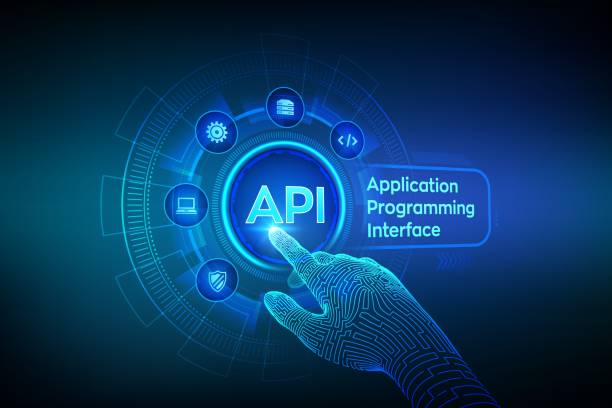
#Natural_Language_Processing (NLP) is a branch of artificial intelligence that allows robots to understand, interpret, and generate human language.
This capability is very important for AI robots because it allows them to communicate with humans naturally and effectively.
Using NLP, robots can understand voice commands, answer questions, summarize texts, and even generate new texts.
Natural language processing includes a set of techniques and algorithms that are used to analyze and understand human language.
These techniques include syntactic analysis, semantic analysis, and pragmatic analysis.
Syntactic analysis helps the robot understand the structure of sentences.
Semantic analysis helps the robot understand the meaning of words and phrases.
Pragmatic analysis helps the robot understand the speaker’s purpose and intention.
Using NLP, AI robots can be used in various applications.
For example, chatbots can automatically communicate with customers and answer their questions.
Translator robots can automatically translate languages.
Writer robots can generate new texts.
Natural language processing enables AI robots to become powerful and useful tools for communication with humans.
Case Study of Successful AI Robot Applications
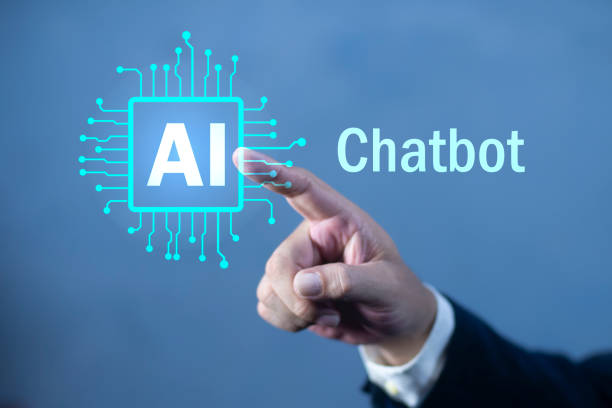
To better understand the applications of AI robots, one can study case studies of successful projects that have been implemented in various industries.
One of these cases is the use of AI robots in automotive production lines.
These robots can perform repetitive and heavy tasks with high accuracy and speed, which leads to increased productivity and reduced costs.
In addition, AI robots can improve product quality and prevent errors.
Another case study is the use of AI robots in hospitals.
These robots can assist nurses in performing daily tasks, deliver medications to patients, and record patients’ vital signs.
In addition, AI robots can assist doctors in diagnosing diseases and planning treatment.
AI robots in healthcare can lead to improved quality of patient care and reduced workload for hospital staff.
The third case study is the use of AI robots in the retail industry.
These robots can help customers find the products they are looking for, answer their questions, and place orders.
In addition, AI robots can collect data about customer behavior and use this data to improve the customer shopping experience.
These case studies show that AI robots can be effectively used in various industries and lead to improved performance and increased productivity.
Frequently Asked Questions
| Question | Answer |
|---|---|
| What is an AI robot? | An Artificial Intelligence (AI) Robot is a machine capable of understanding the environment, reasoning, learning, and making decisions to perform tasks independently. |
| What is the difference between ordinary robots and AI robots? | Ordinary robots perform repetitive tasks based on pre-programming, while AI robots can learn from experience, dynamically interact with the environment, and even behave in a way that resembles human intelligence. |
| What are the main applications of AI robots? | They are used in industries (manufacturing, assembly), medicine (surgery, diagnosis), services (customer support, home), exploration (space, underwater), and many other fields. |
| What technologies are used in building AI robots? | Machine Learning, Computer Vision, Natural Language Processing, Deep Learning, and Robotics are among the key technologies. |
| Can AI robots have emotions? | Currently, robots do not have emotions in the human sense. They can identify and react to emotions, but they do not experience emotions themselves. |
| What are the main challenges in developing AI robots? | Safety, reliability, ethics, autonomy, adaptability to complex environments, and natural interaction with humans are important challenges. |
| How are AI robots trained? | They are usually trained using large amounts of data, machine learning algorithms, and deep learning to identify patterns and make decisions. |
| Examples of AI robots in everyday life? | Smart robotic vacuum cleaners, customer support chatbots, self-driving cars, and surgical robots in hospitals. |
| Are AI robots a threat to human jobs? | Some repetitive jobs may be automated, but at the same time, robots can increase productivity and create new jobs in the development, maintenance, and supervision of these systems. |
| How is the future of AI robots predicted? | They are expected to become smarter, more autonomous, and capable of performing more complex tasks and interacting more closely with humans in various environments. |
And other services of Rasaweb Advertising Agency in the field of advertising
Intelligent Custom Software: Transform website visits with the help of intelligent data analysis.
Intelligent Content Strategy: A new service to increase SEO ranking through the use of real data.
Intelligent Digital Advertising: A fast and efficient solution for analyzing customer behavior with a focus on attractive user interface design.
Intelligent Website Development: Designed for businesses looking to manage campaigns through custom programming.
Intelligent Data Analysis: Professional optimization to improve SEO ranking using key page optimization.
And more than hundreds of other services in the field of internet advertising, advertising consulting and organizational solutions
Internet Advertising | Advertising Strategy | Advertorial
Sources
What is artificial intelligence and how does it work?
,What is artificial intelligence? | Everything about AI in simple terms
,What is artificial intelligence and what are its applications?
,What is artificial intelligence?
? To reach the peaks of success in the digital world, Rasaweb Advertising Agency, with expertise in user-friendly website design and comprehensive online marketing strategies, is your trusted partner.
📍 Tehran, Mirdamad Street, next to the Central Bank, Southern Kazerun Alley, Ramin Alley No. 6

